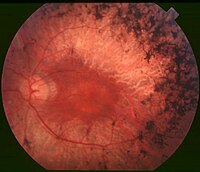
Visual Responses of Photoreceptor-Degenerated Rats Expressing Two Different Types of Channelrhodopsin Genes
Sign Up to like & getrecommendations! Published in 2017 at "Scientific Reports"
DOI: 10.1038/srep41210
Abstract: Optogenetic technologies are expected to be applicable for clinical use in restoring vision. However, the degree of recovered visual function is highly dependent on the function of the chosen optogenetic gene. To investigate the effect… read more here.
Keywords: transgenic rats; photoreceptor cells; photoreceptor; native photoreceptor ... See more keywords

Peptide-based vaccine targeting IL17A attenuates experimental spondyloarthritis in HLA-B27 transgenic rats
Sign Up to like & getrecommendations! Published in 2023 at "RMD Open"
DOI: 10.1136/rmdopen-2022-002851
Abstract: Objectives Spondyloarthritis (SpA) is known as series of immune-mediated inflammatory disease of the axial and peripheral joints. Human leucocyte antigen (HLA)-B27 is a genetic risk factor for SpA. Recent evidence suggests that the interleukin −17… read more here.
Keywords: peptide based; hla b27; transgenic rats; based vaccine ... See more keywords

APP21 transgenic rats develop age-dependent cognitive impairment and microglia accumulation within white matter tracts
Sign Up to like & getrecommendations! Published in 2018 at "Journal of Neuroinflammation"
DOI: 10.1186/s12974-018-1273-7
Abstract: BackgroundMost of the animal models commonly used for preclinical research into Alzheimer’s disease (AD) largely fail to address the pathophysiology, including the impact of known risk factors, of the widely diagnosed sporadic form of the… read more here.
Keywords: transgenic rats; age; pathology; app21 transgenic ... See more keywords

Pre-plaque Aß-Mediated Impairment of Synaptic Depotentiation in a Transgenic Rat Model of Alzheimer’s Disease Amyloidosis
Sign Up to like & getrecommendations! Published in 2019 at "Frontiers in Neuroscience"
DOI: 10.3389/fnins.2019.00861
Abstract: How endogenously produced soluble amyloid ß-protein (Aß) affects synaptic plasticity in vulnerable circuits should provide insight into early Alzheimer’s disease pathophysiology. McGill-R-Thy1-APP transgenic rats, modeling Alzheimer’s disease amyloidosis, exhibit an age-dependent soluble Aß-mediated impairment of… read more here.
Keywords: alzheimer disease; transgenic rats; depotentiation; disease amyloidosis ... See more keywords

Phosphodiesterase 9A Inhibition Facilitates Corticostriatal Transmission in Wild-Type and Transgenic Rats That Model Huntington’s Disease
Sign Up to like & getrecommendations! Published in 2020 at "Frontiers in Neuroscience"
DOI: 10.3389/fnins.2020.00466
Abstract: Huntington’s disease (HD) results from abnormal expansion in CAG trinucleotide repeats within the HD gene, a mutation which leads to degeneration of striatal medium-sized spiny neurons (MSNs), deficits in corticostriatal transmission, and loss of motor… read more here.
Keywords: transgenic rats; corticostriatal transmission; transmission; huntington disease ... See more keywords